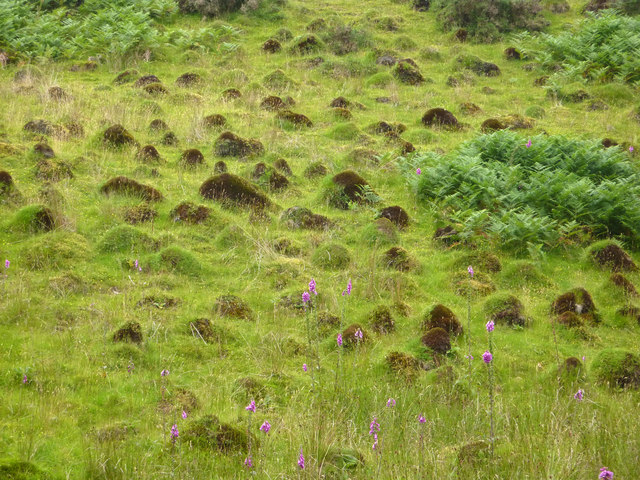It’s a sad reflection of our relationship with ants that my Ecosia search (like Google but they use their profit to plant trees) for ants first and foremost brought up several websites devoted ways and means of killing them. My interest in ants started in earnest during a stint in the Amazon rainforest where every morning I would watch the leaf-cutter ants heading out to work in a line. Throughout the day I would see that line slowly becoming green as the tiny bodies began carrying back their tasty leaf matter. Here I encountered too the terrifyingly massive (and dangerously venemous) bullet ants, the determined army ants and the small but painful fire ants. And, despite the itchy bite marks, I found myself thinking ‘I wish the ants back home were this interesting’. But the truth is the UK’s ants are just as fascinating as those of the rainforest, its just that their lives are hidden from us and hard to decipher.

Take for example the black ant (Lasius niger). This is the small dark species of ant that you are likely to encounter in your garden, or find intruding into your house. Black ants live in large colonies, with their numbers easily reaching 40,000. They like well-drained soils and their queens can live to an astounding 15 years. They are also excellent farmers. Farming has been observed in all kinds of ant species. Even the leaf-cutter ant brings back its leaves to feed a large underground fungus, from which it takes its sustenance. The black ant is best known for farming aphids. This behaviour is so well documented that some ecologists have taken to renaming aphids ‘ant cows’. As the aphids feed, perhaps on your favourite rose-bush, the ants herd them together and harvest the honeydew they excrete. They even ‘milk’ these tiny insects by stroking their backs. This tiny agricultural process benefits the aphids, the ants offering protection from larger predators, whilst the ants get a free meal. Coincidentally I’ve just observed a solitary wasps attempting to approach an aphids ranch on an apple tree beside me, and quickly being scared away by the ant herders.

As fascinating as this behaviour is other ant species can work in even more devious ways. Take ghost ants (Tapinoma melanocephalum) for example. A ghost ant queen will seek out and kill a member of the black ant colony, stealing its scent. Disguised by its smell the ghost then sneaks into the black ant colony and kills its queen, displacing her on the throne. Now she becomes head of the colony, its workers serving her as they did the old queen. The only difference being that her eggs are ghost eggs, meaning slowly her own kind replace the black ant workers.
Even more extreme than this the slave making ant species raid other ant nests, stealing their eggs. Taking them back to their own colony the eggs hatch and the workers, none the wiser, work for their new masters whilst they continue to raid other nests, looking for more slaves to serve their needs.
My favourite UK group of ant species are without a doubt the wood ants. Wood ant nests are super easy to identify, formed of large piles of needles and twigs within woodlands, the whole nest alive with reddish-brown ants. Today these nests seem to have declined, a great shame as they are an important indicator of a healthy woodland, and preform beneficital services such as nutrient recycling and controlling tree pest species. Though the nest may look to be completely random in its construction these structures are actually very complex, their shape designed to maximise absorption of solar heat, allow rain water to run off and having vents which can be opened and closed to release heat. Amazingly wood ant nests are even home to other insects such as worms and beetles which benefit from the warmth and safety of the nest. There’s even a tiny species of ant which actually lives within twigs in the wood ant’s nest.

Finally we come to the easiest ant to learn and identify; the yellow meadow ant. These live within large mounds on sandy, low nutrient grasslands. Without even seeing these ants this should be enough to give you an ID. Add to this the fact that they are yellow in colour and the name really tells you everything. What more would you want?

So there really are fascinating species of ant on the UK. Indeed there are more species than I have time or inclination to list, each with amazing behaviours and lifecycles. And even if I can’t persuade you to like ants for themselves surely you can learn to love them for the sake of the species which depend on them? Many of our blue butterflies, from the Adonis to the silver studded blue, depend on ants as part of their lifecycle. During their chrysalis period these butterflies give out sounds or scents which attract ants to them, making them believe the butterflies are ant eggs or pupa. They then carry them back to their nest where they are safe and protected from predators. To keep the ants sweet the pupa often release tasty fluids for them to eat. Once metamorphosis is complete the butterflies simply walk out and fly away. The fall in many species of these butterflies has been attributed to the loss of their ant hosts, as intensification of grasslands have made many fields less suitable for ant species.

The fact is that ants are an important part of our ecosystem, with a vital role to play. From being food for green woodpeckers to forming symbiotic relationships with plants or other insects, we need them around. And importantly too they are pretty damn amazing. Just sit and watch your local ants for a while and I’m sure you’ll become fascinated too.